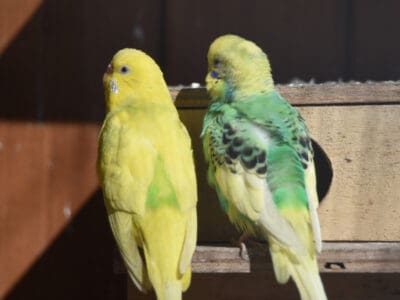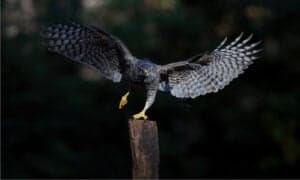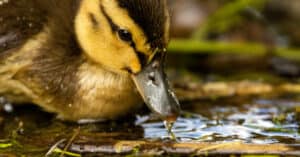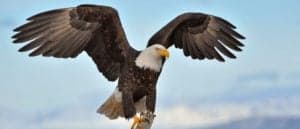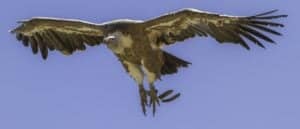How to Attract Owls: 10 Easy Steps
@media (min-width: 481px) {
.mobile-top-content {
display: none;
}
}
#mobileTopContentCTACarouselControls { overflow: hidden; text-overflow: ellipsis; white-space: nowrap; }
.mobile-top-content .more { color: #fff; }
.mobile-top-content a { color: #fff; text-decoration: underline; }
.mobile-top-content a:hover { color: #fff; text-decoration: underline; }
@media (max-width: 480px) {
.mobile-top-content {
background-color: #06a10b;
color: #fff;
text-align: center;
/*height: 60px;
padding-top:5px;*/
font-size:80%;
/* display: block; */
margin: 0px -30px;
}
}
Some people may be disturbed by midnight hooting, while others welcome the sounds, knowing that their rodent problem is being taken care of. Owls can be a helpful backyard resident by hunting a variety of nuisance animals like mice, voles, insects and other garden pests. They can also be amazing creatures for bird watching and photography. Read on to find out how to attract owls in 10 easy steps!
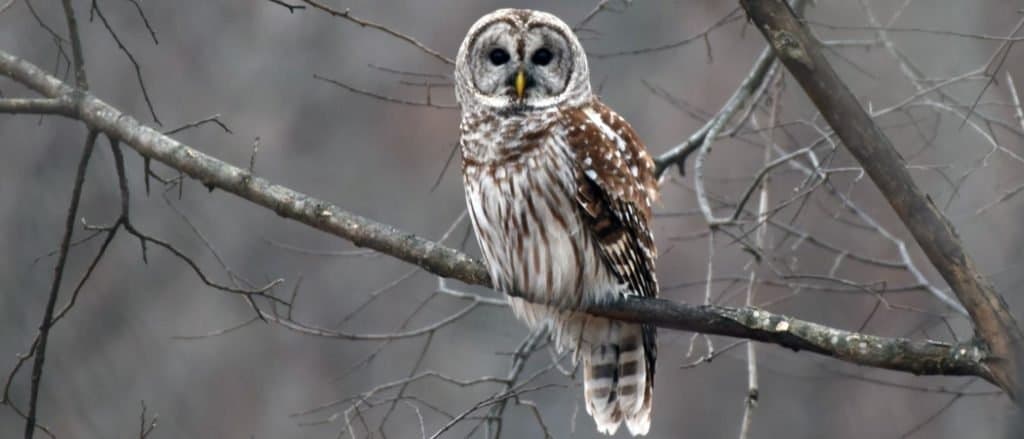
Malachi Ives/Shutterstock.com
1. Install Nesting Boxes
You can buy pre-made nesting boxes (owl houses) or make your own. For best results place your nesting box facing south, away from the wind and provide a clear entrance so the owls can easily fly in. The size will depend on the kind of owl you are hoping to attract to your home. Three common owls are the barn owl, screech owl and barred owl.
button.pulse {
transform: scale(1); animation: pulse 2s infinite;
box-shadow: 0 0 0 0 rgba(11, 247, 25, 1);
}
@keyframes pulse {
0% { transform: scale(0.90); box-shadow: 0 0 0 0 rgba(11, 247, 25, 0.5); }
60% { transform: scale(1); box-shadow: 0 0 0 15px rgba(11, 247, 25, 0); }
100% { transform: scale(0.90); box-shadow: 0 0 0 0 rgba(11, 247, 25, 0); }
}
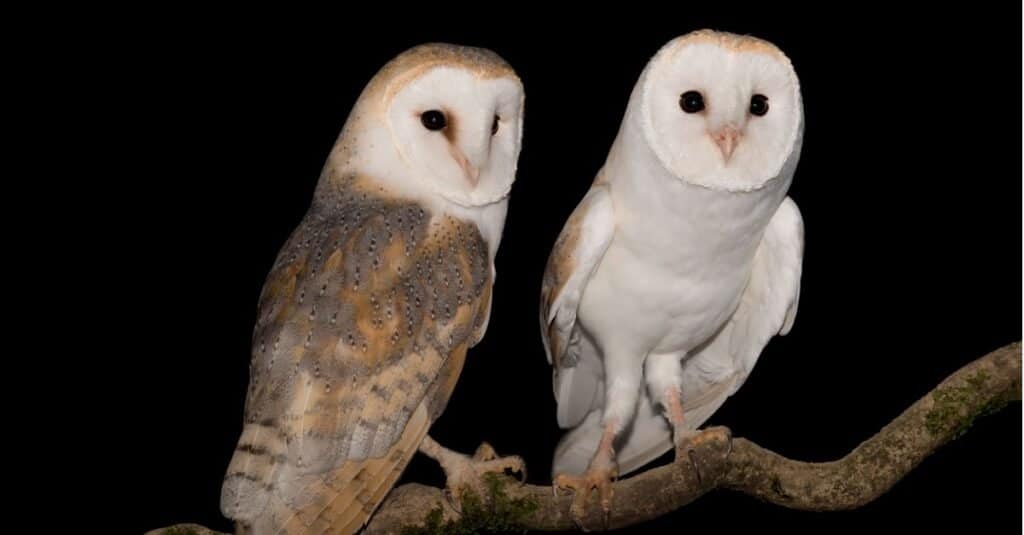
iStock.com/Paolino Massimiliano Manuel
- Barn owl: These are some of the most well-known owls, found all over the world. They have a heart-shaped white face and are about 12 to 15 inches tall and weigh around a pound-and-a-half. Their front sides are all white with their back feathers and wing a mix of multicolored brown and grey. The females will have small dark spots as well.
- Recommended nesting box: 17”H x 20”W x 26”D, opening 2-3”, place 10-12 feet high on tree, pole or in a barn/garage
- Screech owl: Screech-owls have a distinct call, be sure to listen to a sample online before committing to attracting them to your yard! These are beautiful owls with feathers that mimic the coloration of tree bark making them very camouflaged. They are about 8-12 inches tall and are attracted to nesting boxes.
- Recommended nesting box: 20”H x 8.75W x 11”D, opening 3”, place 8-20 feet high on tree or pole
- Barred owl: One of the larger owl species, barred owls are 18-20 inches tall. They are a round headed owl with large black eyes and a curved yellowish beak. The coloration of their feathers are white with grayish brown feathers mixed throughout in a striping pattern. They have one of the most classic “hoots” which you can listen to online, you will recognize it!
- Recommended nesting box: 25”H x 14”W x 19”D, opening 3”, place 10-12 feet off the ground on a tree or pole
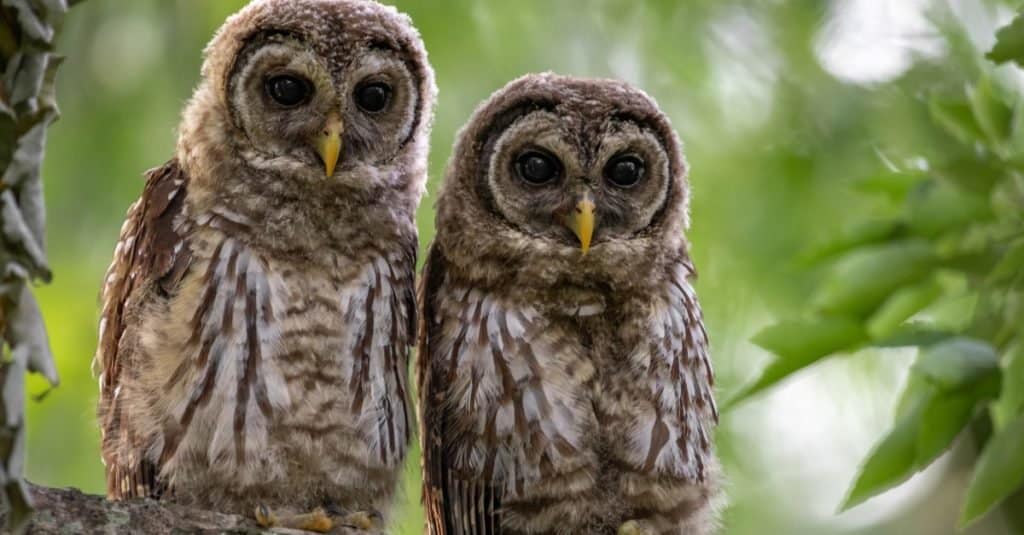
2. Make a Perching Spot
You may already have several perching spots in your yard or garden. Owls like to rest on perching spots while they are hunting. They may swoop down and try to catch a mole and then need to fly back to a perching spot to catch its breath and watch for more prey. They like to use tree branches, especially horizontal branches so check your space for multiple areas they can perch. You can add more as well by installing poles (like flag poles without a flag) and fence posts.

3. Have a Bird Bath
Owls don’t need a lot of water to drink, they get much of their water from the animals they eat, but they do need some. They also will need a spot to cool off in warmer weather. Owls won’t be attracted to a stem-based bird bath outside your back window. They will need a bigger, deeper basin type bird bath in a more remote area of your yard. The water should be around 2 inches deep. You will want to change the water in the bird bath every 2-4 days especially if you live in an area where mosquitoes populate in stagnant water. It also provides fresh water for the owls.
4. Plant Some Native Plants

Fedotova Olga/Shutterstock.com
If you don’t already have a variety of native plants you may want to add some. Not for the owls to eat, but to attract more rodents and insects for the owls to eat. Adding some plants along the edge of your property or in an area less used will attract a variety of mice, voles, crickets and grasshoppers for example.
5. Make a Leaf or Brush Pile
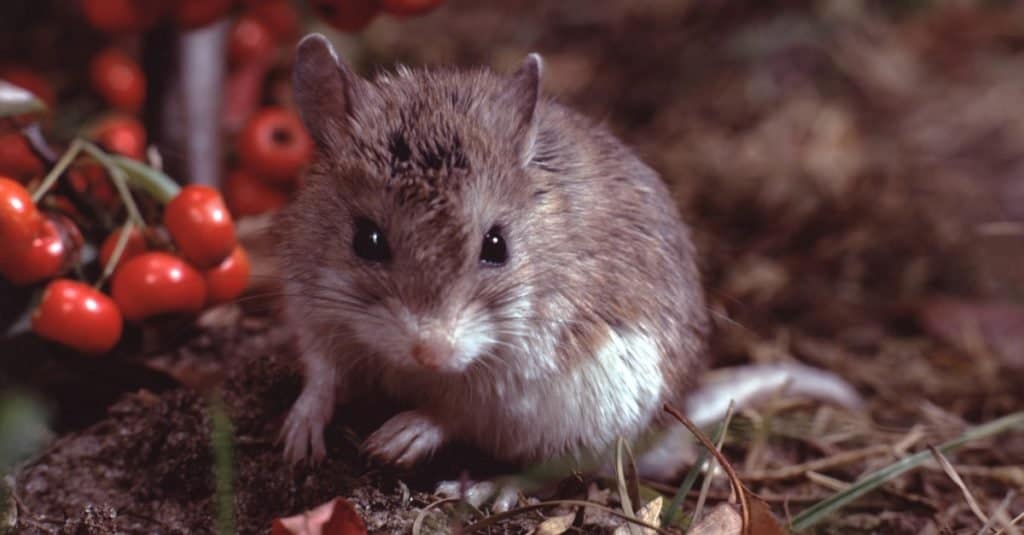
Liz Weber/Shutterstock.com
Same idea with a leaf pile, leaves provide a place for insects to hide and remain protected. Rodents as well will often make nests in leaf and brush piles. The more mice and insects, the more prey for owls.
6. Turn Off Lights at Night
If you have flood lights or motion lights you will want to turn those off after you go to bed. The light will not help the owls see to hunt better, it will discourage small prey and will interfere with the owls natural hunting instincts. Owls have very good binocular vision, meaning they have good depth perception. This helps them zero-in on moving prey like a mouse.
7. Leave your Grass Longer
Here is an excuse to mow your lawn less often! Leaving your grass a little longer will create an environment that feels safer for mice, moles, snakes and frogs. If you don’t want to let your whole lawn to look a little shaggy, feel free to just leave one area long and trim the rest.
8. Leave your Tree Branches to Overgrow
If you typically prune your trees in the winter, you may want to skip a year or two, or only remove branches that may pose a danger. Leaving dead branches, especially horizontal ones, can provide natural perching spots for owls.
9. Don’t Use Rodent Killer
If you are trying to keep rodents out of your home or garage, do not use rodent killer like rat poison. If the rats ingest it and wander outside the owls can eat the rats and be poisoned. This is called “secondary poisoning”. Opt for traps or catch and release traps instead.
10. Keep Pets Away From the Nesting Boxes
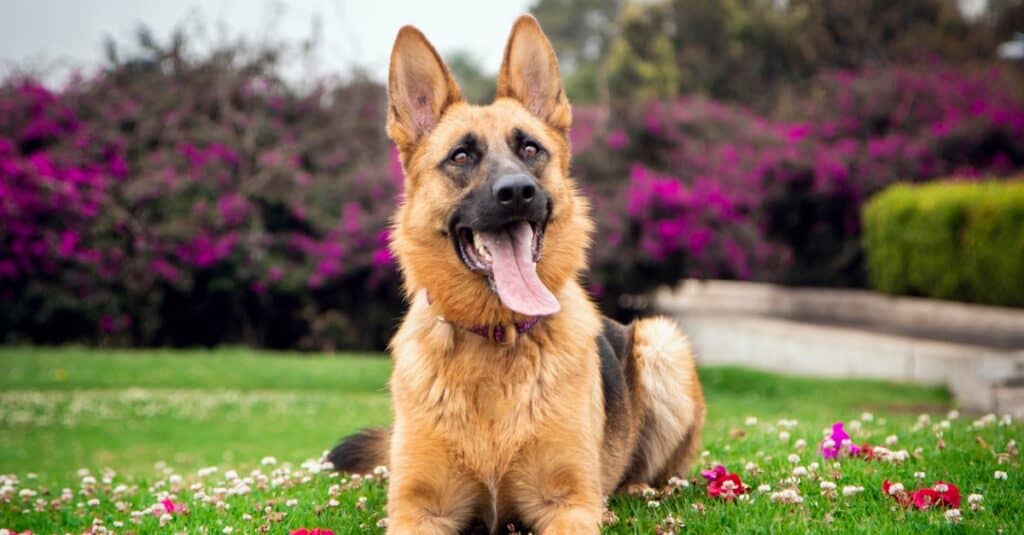
iStock.com/VictorRicoFoto
Owls will not feel safe if there is a large dog in their space. They will just move somewhere else. So if you have pets that may bark at or scare off on owl, it is best to keep them in a different area of your yard or rethink your owl idea. People who have small pets or chickens should be aware that owls can, and will prey on whatever they can catch so it is probably not a good idea to encourage owls to your property if you have a small dog you let out frequently.
Bonus Tip

Kurit afshen/Shutterstock.com
Another fun way to enjoy owls in your backyard is to install a small wireless camera inside the nesting box! Filling the bottom of the nesting box with wood chips and crushed leaves provides the perfect nesting spot for eggs and baby owls! Watching the owlets hatch and grow is an amazing event.
More from A-Z Animals
.more-snake-card-image { max-height:140px !important; }
@media (min-width: 481px) {
.mobile-top-content {
display: none;
}
}
#mobileTopContentCTACarouselControls { overflow: hidden; text-overflow: ellipsis; white-space: nowrap; }
.mobile-top-content .more { color: #fff; }
.mobile-top-content a { color: #fff; text-decoration: underline; }
.mobile-top-content a:hover { color: #fff; text-decoration: underline; }
@media (max-width: 480px) {
.mobile-top-content {
background-color: #06a10b;
color: #fff;
text-align: center;
/*height: 60px;
padding-top:5px;*/
font-size:80%;
/* display: block; */
margin: 0px -30px;
}
}
Some people may be disturbed by midnight hooting, while others welcome the sounds, knowing that their rodent problem is being taken care of. Owls can be a helpful backyard resident by hunting a variety of nuisance animals like mice, voles, insects and other garden pests. They can also be amazing creatures for bird watching and photography. Read on to find out how to attract owls in 10 easy steps!

Malachi Ives/Shutterstock.com
1. Install Nesting Boxes
You can buy pre-made nesting boxes (owl houses) or make your own. For best results place your nesting box facing south, away from the wind and provide a clear entrance so the owls can easily fly in. The size will depend on the kind of owl you are hoping to attract to your home. Three common owls are the barn owl, screech owl and barred owl.
button.pulse {
transform: scale(1); animation: pulse 2s infinite;
box-shadow: 0 0 0 0 rgba(11, 247, 25, 1);
}
@keyframes pulse {
0% { transform: scale(0.90); box-shadow: 0 0 0 0 rgba(11, 247, 25, 0.5); }
60% { transform: scale(1); box-shadow: 0 0 0 15px rgba(11, 247, 25, 0); }
100% { transform: scale(0.90); box-shadow: 0 0 0 0 rgba(11, 247, 25, 0); }
}

iStock.com/Paolino Massimiliano Manuel
- Barn owl: These are some of the most well-known owls, found all over the world. They have a heart-shaped white face and are about 12 to 15 inches tall and weigh around a pound-and-a-half. Their front sides are all white with their back feathers and wing a mix of multicolored brown and grey. The females will have small dark spots as well.
- Recommended nesting box: 17”H x 20”W x 26”D, opening 2-3”, place 10-12 feet high on tree, pole or in a barn/garage
- Screech owl: Screech-owls have a distinct call, be sure to listen to a sample online before committing to attracting them to your yard! These are beautiful owls with feathers that mimic the coloration of tree bark making them very camouflaged. They are about 8-12 inches tall and are attracted to nesting boxes.
- Recommended nesting box: 20”H x 8.75W x 11”D, opening 3”, place 8-20 feet high on tree or pole
- Barred owl: One of the larger owl species, barred owls are 18-20 inches tall. They are a round headed owl with large black eyes and a curved yellowish beak. The coloration of their feathers are white with grayish brown feathers mixed throughout in a striping pattern. They have one of the most classic “hoots” which you can listen to online, you will recognize it!
- Recommended nesting box: 25”H x 14”W x 19”D, opening 3”, place 10-12 feet off the ground on a tree or pole

2. Make a Perching Spot
You may already have several perching spots in your yard or garden. Owls like to rest on perching spots while they are hunting. They may swoop down and try to catch a mole and then need to fly back to a perching spot to catch its breath and watch for more prey. They like to use tree branches, especially horizontal branches so check your space for multiple areas they can perch. You can add more as well by installing poles (like flag poles without a flag) and fence posts.

3. Have a Bird Bath
Owls don’t need a lot of water to drink, they get much of their water from the animals they eat, but they do need some. They also will need a spot to cool off in warmer weather. Owls won’t be attracted to a stem-based bird bath outside your back window. They will need a bigger, deeper basin type bird bath in a more remote area of your yard. The water should be around 2 inches deep. You will want to change the water in the bird bath every 2-4 days especially if you live in an area where mosquitoes populate in stagnant water. It also provides fresh water for the owls.
4. Plant Some Native Plants

Fedotova Olga/Shutterstock.com
If you don’t already have a variety of native plants you may want to add some. Not for the owls to eat, but to attract more rodents and insects for the owls to eat. Adding some plants along the edge of your property or in an area less used will attract a variety of mice, voles, crickets and grasshoppers for example.
5. Make a Leaf or Brush Pile

Liz Weber/Shutterstock.com
Same idea with a leaf pile, leaves provide a place for insects to hide and remain protected. Rodents as well will often make nests in leaf and brush piles. The more mice and insects, the more prey for owls.
6. Turn Off Lights at Night
If you have flood lights or motion lights you will want to turn those off after you go to bed. The light will not help the owls see to hunt better, it will discourage small prey and will interfere with the owls natural hunting instincts. Owls have very good binocular vision, meaning they have good depth perception. This helps them zero-in on moving prey like a mouse.
7. Leave your Grass Longer
Here is an excuse to mow your lawn less often! Leaving your grass a little longer will create an environment that feels safer for mice, moles, snakes and frogs. If you don’t want to let your whole lawn to look a little shaggy, feel free to just leave one area long and trim the rest.
8. Leave your Tree Branches to Overgrow
If you typically prune your trees in the winter, you may want to skip a year or two, or only remove branches that may pose a danger. Leaving dead branches, especially horizontal ones, can provide natural perching spots for owls.
9. Don’t Use Rodent Killer
If you are trying to keep rodents out of your home or garage, do not use rodent killer like rat poison. If the rats ingest it and wander outside the owls can eat the rats and be poisoned. This is called “secondary poisoning”. Opt for traps or catch and release traps instead.
10. Keep Pets Away From the Nesting Boxes

iStock.com/VictorRicoFoto
Owls will not feel safe if there is a large dog in their space. They will just move somewhere else. So if you have pets that may bark at or scare off on owl, it is best to keep them in a different area of your yard or rethink your owl idea. People who have small pets or chickens should be aware that owls can, and will prey on whatever they can catch so it is probably not a good idea to encourage owls to your property if you have a small dog you let out frequently.
Bonus Tip

Kurit afshen/Shutterstock.com
Another fun way to enjoy owls in your backyard is to install a small wireless camera inside the nesting box! Filling the bottom of the nesting box with wood chips and crushed leaves provides the perfect nesting spot for eggs and baby owls! Watching the owlets hatch and grow is an amazing event.

